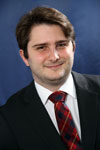Childlessness and inter-temporal fertility choice in Germany
-
Macro Lunch
PCPSE Room 101
United States
Abstract:
This paper develops a theory of fertility and childlessness by linking the choice of fertility and the timing of fertility to labor market opportunities of individuals in a three period model. The model parameters are identified using five distinct facts of the 2008 & 2012 German Microcensus: (i) childlessness increases with education for married women and is U-shaped for single women; (ii) fertility of mothers until age 30 is decreasing with education for both married and single women; (iii) fertility of mothers above age 30 is increasing with education for both married and single women; (iv) marriage rates are decreasing for women, while being increasing for men; (v) divorce rates are hump-shaped for women and decreasing for men. The key feature of the model is the trade-off between fertility and labor supply for a given period, which depends on preferences and labor market characteristics, such as the return to education and experience as well as idiosyncratic wage risk. Marriage formation and dissolution are endogenously modeled via bargaining over fertility choices of both spouses which are subject to change following shocks to wages or fecundity in each period.
